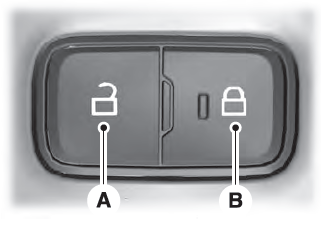Lincoln Aviator 2020-2025 Service Manual / Chassis / Driveline / Front Drive Halfshafts / Diagnosis and Testing - Front Drive Halfshafts
Lincoln Aviator: Front Drive Halfshafts / Diagnosis and Testing - Front Drive Halfshafts
Principles of Operation
Inspection and Verification
-
Verify the customer concern.
-
Visually inspect for obvious signs of mechanical or electrical damage.
-
If an obvious cause for an observed or reported concern is
found, correct the cause (if possible) before proceeding to the next
step
-
If the cause is not visually evident, verify the symptom and refer to the Symptom Chart.
Symptom Chart: NVH
Diagnostics in this manual assume a certain skill level and knowledge of Ford-specific diagnostic practices.
REFER to: Diagnostic Methods (100-00 General Information, Description and Operation).
Symptom Chart NVH
| Condition | Possible Sources | Actions |
|---|---|---|
| Axle howling or whine – front axle |
|
|
| Driveline clunk - loud clunk when shifting from REVERSE to DRIVE |
|
|
|
|
|
| Driveline clunk — occurs during acceleration or from cruise to coast/deceleration |
|
|
|
|
|
| Driveline clunk — occurs as the vehicle starts to move forward following a stop |
|
|
| Clicking, popping or grinding - occurs while the vehicle is turning |
|
|
|
|
|
| Grunting — normally associated with a shudder experienced during acceleration from a complete stop |
|
|
 Removal and Installation - Halfshaft
Removal and Installation - Halfshaft
Special Tool(s) /
General Equipment
204-592Separator, Lower Arm Ball JointTKIT-2006C-FFMFLMTKIT-2006C-LMTKIT-2006C-ROW
Tie Rod End Remover
Tire Lever
Removal
NOTICE:
Suspension fasteners are critical parts that affect the
performance of vital components and systems...
Other information:
Lincoln Aviator 2020-2025 Service Manual: Removal and Installation - Windshield Wiper Blade Insert
Special Tool(s) / General Equipment Flat Headed Screw Driver Removal NOTE: Left hand side (LH) shown, right hand side (RH) similar. Lift the windshield wiper blade and arm assembly off of the windshield. Rotate the blade towards the windshield until the blade is locked in position...
Lincoln Aviator 2020-2025 Service Manual: Disassembly and Assembly of Subassemblies - Cylinder Head
Special Tool(s) / General Equipment 303-1249Valve Spring CompressorTKIT-2006UF-FLMTKIT-2006UF-ROW 303-1418Compressor, Valve SpringTKIT-2008ET-FLMTKIT-2008ET-ROW 303-1567Sizer, Teflon SealTKIT-2010C-FLM 303-300 (T87C-6565-A) Set, Valve Spring CompressorTKIT-1988-FESTIVAT88C-1000-STTKIT-1988-TRACERTKIT-2009TC-F 303-350 (T89P-6565-A) Compressor, Valve SpringTKIT-1990-LMHTKIT-1989-FTKIT-1989-FMTKIT-1989-FLM 307-005 (T59L-100-B) Slide Hammer 310-205Fuel Injector Brush 310-206Remover, Fuel InjectorTKIT-2009A-FLM 310-207Installer, Fuel Injector Seal AssemblyTKIT-2009A-FLM DISASSEMBLY NOTICE: During engine repair procedures, cleanliness is extremely important...
Categories
- Manuals Home
- Lincoln Aviator Owners Manual
- Lincoln Aviator Service Manual
- Disabling Auto-Start-Stop
- Interior Lamps
- USB Port and Power Point Locations
- New on site
- Most important about car
Locking and Unlocking the Doors from Inside

Locking the Doors
Press the lock switch on the door interior trim panel. The doors can no longer be released using the exterior door handle switches and the luggage compartment locks.
Copyright © 2025 www.liaviator2.com

